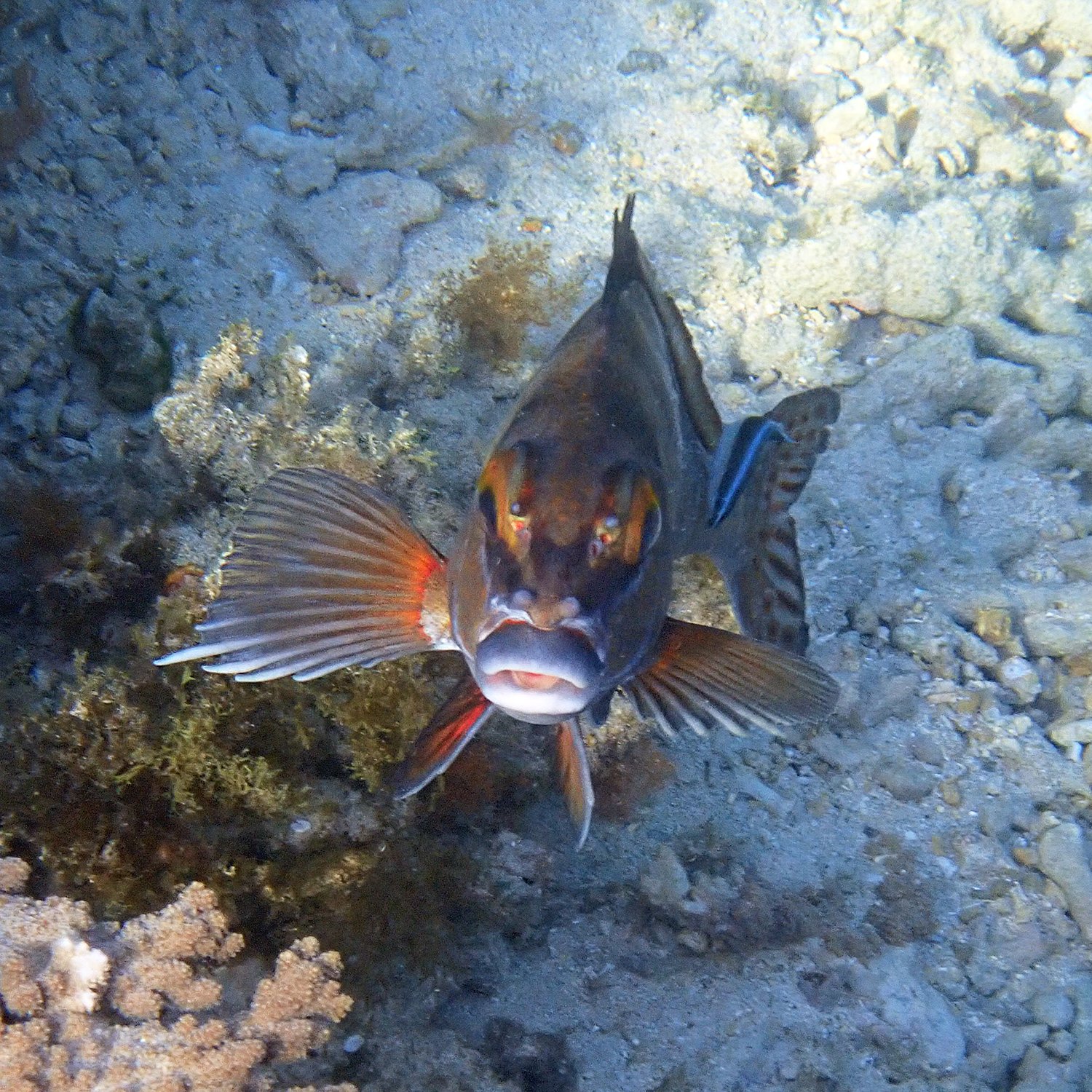I’ve been seriously busy these last few weeks. As a freelancer you have to take what you can when you can, and, sadly, it means some of the things I love doing, like this blog, have to take a back seat. Not that I am complaining. All work is good! Anyhoo, onwards and upwards!
So what has been happening in Norfolk Island’s lagoons this last few weeks? Actually, a lot, so I will just have to confine this week’s blog to my personal faves, and, sadly, not-so faves.
The flatworms have been out and about, and although at first blush they look a little ho hum, they are actually rather special and quite pretty. They also have an unusual and noteworthy reproductive practice. These worms are hermaphrodites, so they all have a penis. To decide which one will inseminate the other they engage in penis fencing (I know, you wouldn’t read about it!). When the ‘winner’ touches its penis to the ‘skin’ of the other, insemination occurs. Known as hypodermic insemination, basically, the winner of the fight gets to stab the other with its penis and the ‘loser’ bears the burden of motherhood.
During this unique ritual, two flatworms will move toward one another, roll around together and then avert their penis and stylets outward. The two partners attempt to stab the other. This can sometimes result in injury but luckily wounds tend to heal within 24 hours. They are also trying to avoid being stabbed as a retaliation while they try to stab the other. The successful animal is then attached to its partner with its stylet embedded in the skin of the other for a couple minutes. At this phase sperm is being injected (Siefarth, 2002).
These flatworms are sometimes mistaken for nudibranchs. But nudies breathe using a naked gill (hence the name nudi-branch) shaped into branchial plumes in a rosette on their backs.
You can find out more about them here.
Below is a mesmerising video that I photographed as one of these worms moved across the reef.
The Norfolk cardinalfish, Ostorhinchus norfolcensis, have been doing their annual pairing. When these guys pair off, she releases the eggs right by him, which he then takes up in his mouth. Yep, this poppa is a mouth brooder.
Norfolk cardinalfish, Ostorhinchus norfolcensis
She chaperones him, making sure he is looking after their bubbas exactly the right way until they are ready to hatch. At this time of the year the pair bob about close to the reef wall, or under a ledge, with the male occasionally opening his mouth to aerate his eggs.
The full story is here. And here’s a photo taken on 24 October of the male with his big pouch of eggs under his chin (right).
Dotted around the lagoons are a few ‘cleaning stations’ as I like to call them. All kinds of species line up to have a good old spa treatment from the bluehead wrasse, Thalassoma amblycephalum. I’ve popped in a few photos of different fish, but it was really lovely to see this shy painted morwong, Cheilodactylus ephippium (top two images) in his happy place having a good once over. That look of ecstasy just slays me. He was totally oblivious to me watching, instead he was concentrating on stretching out those fins and flaring those gills! (As you do!)
Other great sightings included one of my faves, the spotfin squirrelfish, Neoniphon samara and a fleeting glance of a disappearing Christmas wrasse, Thalassoma trilobatum, often mistaken for the surge wrasse. These fish like to skim across the really shallow rock ledges, where it is impossible for people to follow.
Heavy rain on 21 and 22 October meant the sand plug into Emily Bay breeched and a torrent of polluted overland waterflow headed in there. Once again, Norfolk Island Regional Council had to put out the signs declaring the water unsafe for swimming. And I had to tell my daughter, who was bringing my toddler grandson to the island to visit, that a swim near the creek outlet would not be advisable. It is heartbreaking for tourism, and heartbreaking for the coral. What does this mean for the reef and our underwater life? You can find out exactly what it means in my blog post about the issue: ‘The state of play on Norfolk Island’s reef’.
Click on the image to enlarge
Public health warning in place at Emily Bay, Norfolk Island
Sadly, there have been more outbreaks of coral disease (above). You can see the progression of this disease in just a few short weeks on this coral. Click on each image to enlarge them and to see the comparable parts of the colony marked with corresponding green, blue and red ovals. I have sent these to Australian Marine Parks to add to the other images I have sent them.










